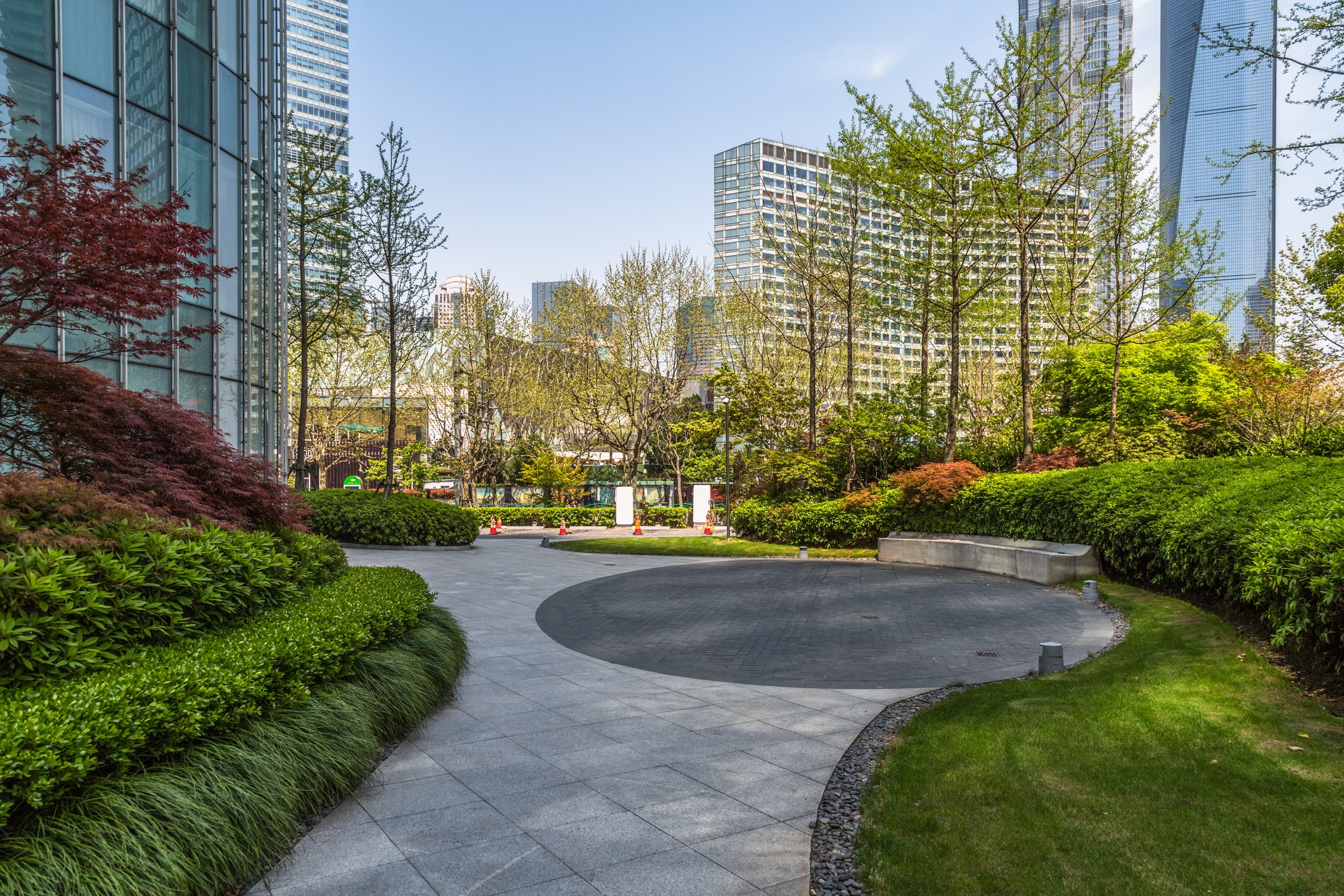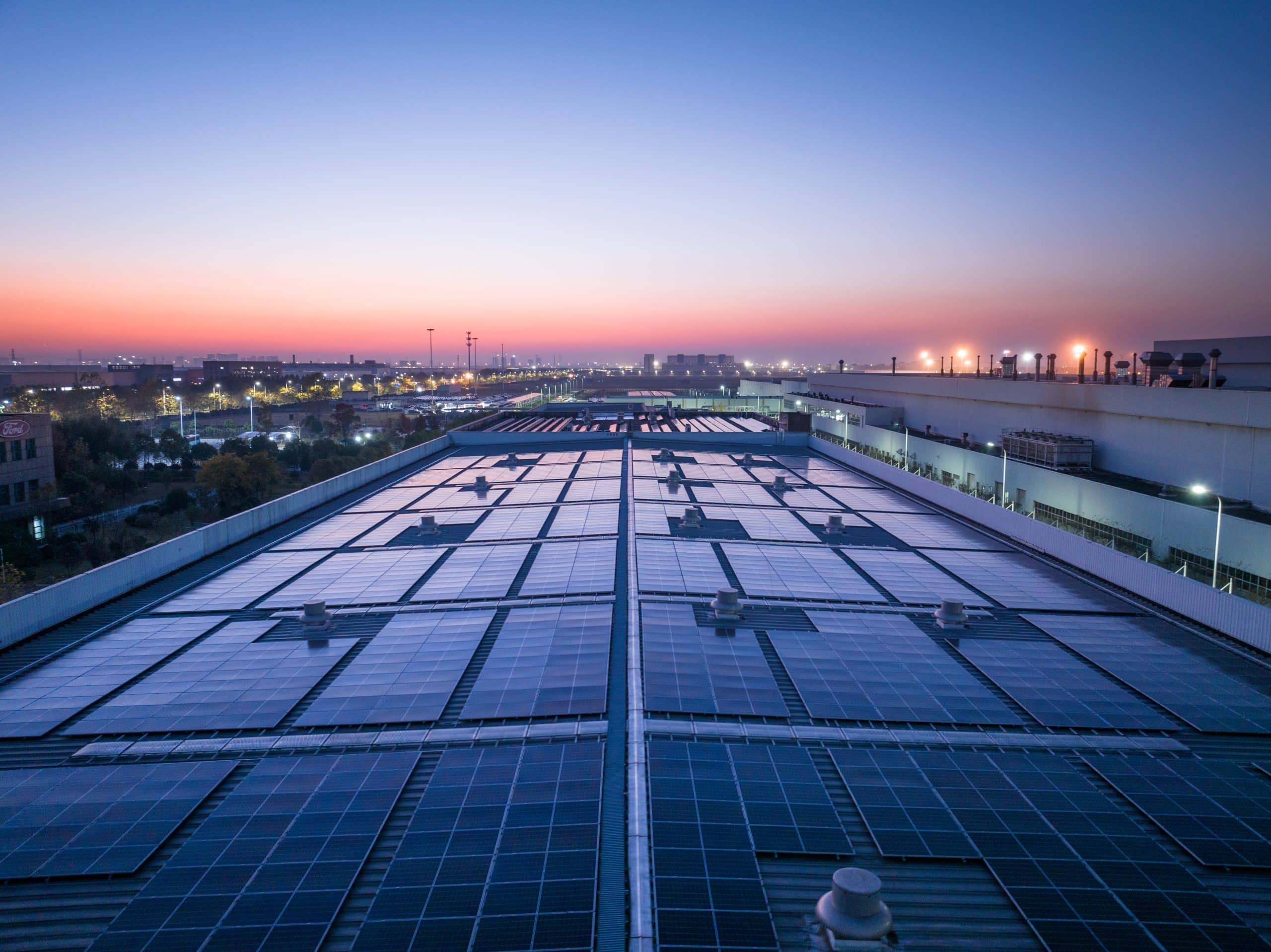Commercial renovation projects often include conversations about energy efficiency and sustainability, but it can be…

The Role of Landscaping in Enhancing Commercial Building Sustainability
Sustainability has never been more important in commercial construction. Businesses across Michigan are looking for ways to create buildings that are not only visually impressive but also environmentally responsible. Landscaping plays a crucial role in this effort, serving as both an aesthetic enhancement and a functional tool for improving efficiency and reducing environmental impact.
In this post, we’re going to take a closer look at exactly what green landscaping is and how it can help cut your property’s carbon footprint and impact on local ecology. There are even benefits to water management and long-term economics. With more thoughtful landscaping choices, your organization can lower energy costs, support the surrounding ecosystem, and contribute to a healthier, more sustainable future.
What Is Green Landscaping in Commercial Design?
When you hear about green landscaping, when it comes to the commercial design-build process, it’s referring to the integration of plants, natural materials, and eco-friendly techniques that support sustainability while complementing a building’s architecture.
In commercial design, this means creating outdoor environments that do more than look attractive. They actively contribute to energy efficiency, resource conservation, and the well-being of the community. Examples of green landscaping include using native plants that thrive in Michigan’s climate, installing green roofs, and designing shaded spaces to reduce the need for artificial cooling.
Sustainable practices like these align with broader goals of reducing environmental footprints and promoting long-term resilience. By treating landscaping as an extension of the building, companies can achieve a balance between form and function.
Reducing Heat Islands With Strategic Landscaping
One of the biggest environmental challenges for commercial properties is the urban heat island effect. Large paved surfaces, parking lots, and rooftops absorb heat during the day and release it slowly at night, raising local temperatures and increasing cooling costs. Strategic landscaping helps mitigate this problem by introducing greenery that shades, cools, and absorbs less heat than traditional hardscaping. Planting shade trees around buildings and parking areas can reduce surface and air temperatures, making outdoor spaces more comfortable for employees and visitors.
Green roofs and vertical gardens offer additional insulation while reducing the demand on HVAC systems. Incorporating reflective and permeable surfaces alongside greenery further minimizes heat absorption and improves stormwater drainage. These techniques not only lower energy use but also create healthier outdoor environments. Cooler surroundings encourage people to spend more time outside, improve air quality, and enhance the overall experience for those who visit or work at the property.
Supporting Local Biodiversity
Sustainable landscaping goes beyond the typical energy savings and overall cost reduction, it’s also highly beneficial to the local environment. By incorporating native plants and creating green spaces that attract pollinators, businesses contribute to healthier ecosystems. Native plants are well-suited to Michigan’s climate, which means they require less water, fertilizer, and maintenance while providing food and shelter for local wildlife.
Pollinator gardens filled with flowering plants help sustain bees, butterflies, and other insects that are vital to agriculture and biodiversity. Green corridors, or connected stretches of vegetation, allow wildlife to move safely through urban and commercial areas. Together, these features improve ecological balance and reduce the negative impacts of urban development.
Adopting these sustainable practices creates landscapes that work in harmony with the environment. They make commercial properties more resilient while fostering goodwill in the community by showing a commitment to protecting natural resources.
Water Management and Efficiency
Another important aspect of sustainable landscaping is water management. Commercial buildings often sit on large paved areas that increase runoff, overwhelming storm drains, and causing localized flooding.
Landscaping provides solutions that manage water more responsibly. Rain gardens, for example, capture runoff and filter it through soil and vegetation, reducing strain on drainage systems while replenishing groundwater.
Permeable pavements allow water to pass through, preventing pooling and erosion. Modern irrigation systems with smart sensors ensure that plants receive just the right amount of water, eliminating waste and conserving resources.
By integrating these features into commercial design, businesses can minimize their water footprint while protecting their property from weather-related damage. Efficient water management not only supports sustainability but also reduces long-term operational costs.
Long-Term Economic Benefits of Sustainable Landscaping
For businesses, sustainable landscaping offers clear financial advantages in addition to its environmental benefits. Green spaces that provide shading and natural insulation help reduce energy consumption, which lowers monthly utility costs. Choosing native plants that require minimal maintenance also cuts expenses tied to watering, fertilizing, and upkeep.
At the same time, properties with well-planned landscapes enjoy higher curb appeal and market value. Visitors and tenants are drawn to spaces that feel inviting, and companies can showcase their commitment to eco-friendly practices. Over the years, these cost savings and enhanced reputation have contributed to a stronger return on investment.
Partner with Schonsheck for Sustainable Commercial Design
Schonsheck approaches landscaping as a vital component of commercial sustainability, not an afterthought. With decades of experience in Michigan, we know how to design and build spaces that balance aesthetics, efficiency, and environmental responsibility. Our integrated design-build process ensures that landscaping solutions are aligned with the overall goals of the property from the very beginning.
Clients trust us because we deliver results that last. Whether the focus is on reducing heat islands, supporting local biodiversity, or improving water efficiency, our team brings expertise and creativity to every project. By working with Schonsheck, you gain a partner committed to both your business goals and the health of the community.
Leading Sustainable Commercial Landscape Design in Michigan
Landscaping has the power to do more than beautify a property. When thoughtfully planned, it reduces energy use, manages water responsibly, and strengthens local ecosystems. Schonsheck is dedicated to designing and building projects that reflect both ecological responsibility and long-term success. Reach out to us online or call us today to explore how sustainable landscaping can transform your property into a greener, more resilient part of Michigan’s future.



